Understanding the Canadian Wildfires and Their Environmental Ramifications
The Canadian wildfires have a big impact on the environment and people’s health. Every year, large areas of Canadian forests burn in intense fires, releasing smoke and pollutants into the air. These emissions harm the air quality. The wildfires also affect the air quality in the neighboring United States. To prevent future wildfires, it’s important to understand why they happen. Factors like rising temperatures, changing precipitation patterns due to climate change, human-made fires, and fireworks have led to more frequent wildfires. These factors are big challenges for the environment, ecosystems, and public health, so we need to take immediate action to address them.
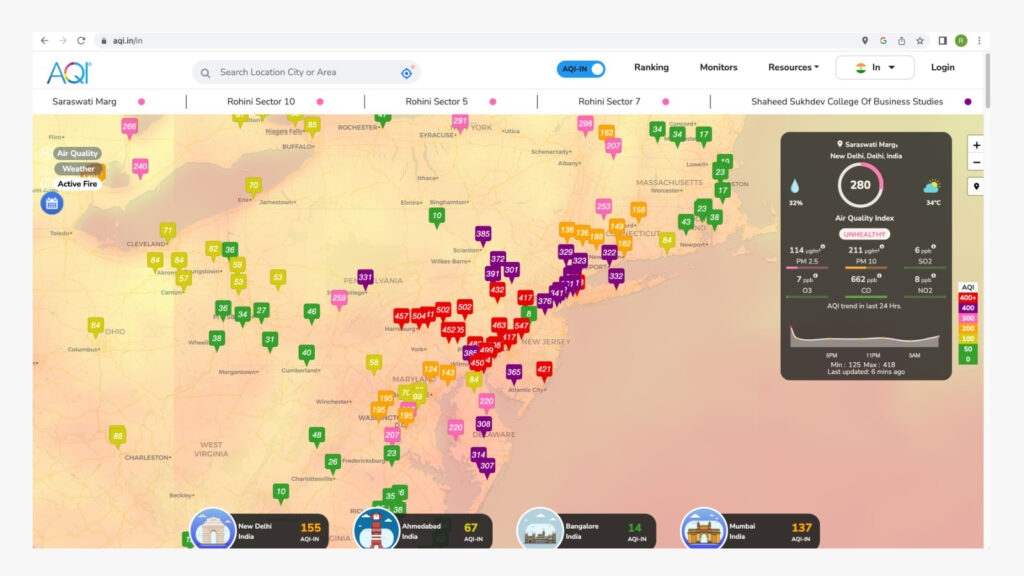
– Addressing the Hazards
The Canadian wildfires greatly affect the air quality, which is a big worry. These fires create thick smoke that contains a mix of particles, volatile organic compounds (VOCs), and harmful pollutants. Breathing in this smoke can be harmful to people’s health. These substances also pose risks to individuals who come into contact with the smoke. The pollutants can travel long distances and impact the air quality in nearby areas and even cross international borders.
It’s important to monitor the US Air Quality Index (AQI) during the wildfire season caused by Canadian wildfires. This helps address health risks associated with the fires. Stay informed and take necessary precautions to protect yourself. The AQI is a useful tool for assessing air quality levels and issuing timely warnings to the public. Keep a close eye on the AQI to reduce exposure to pollutants, safeguard public health, and prioritize the well-being of vulnerable individuals. Stay proactive and well-informed.
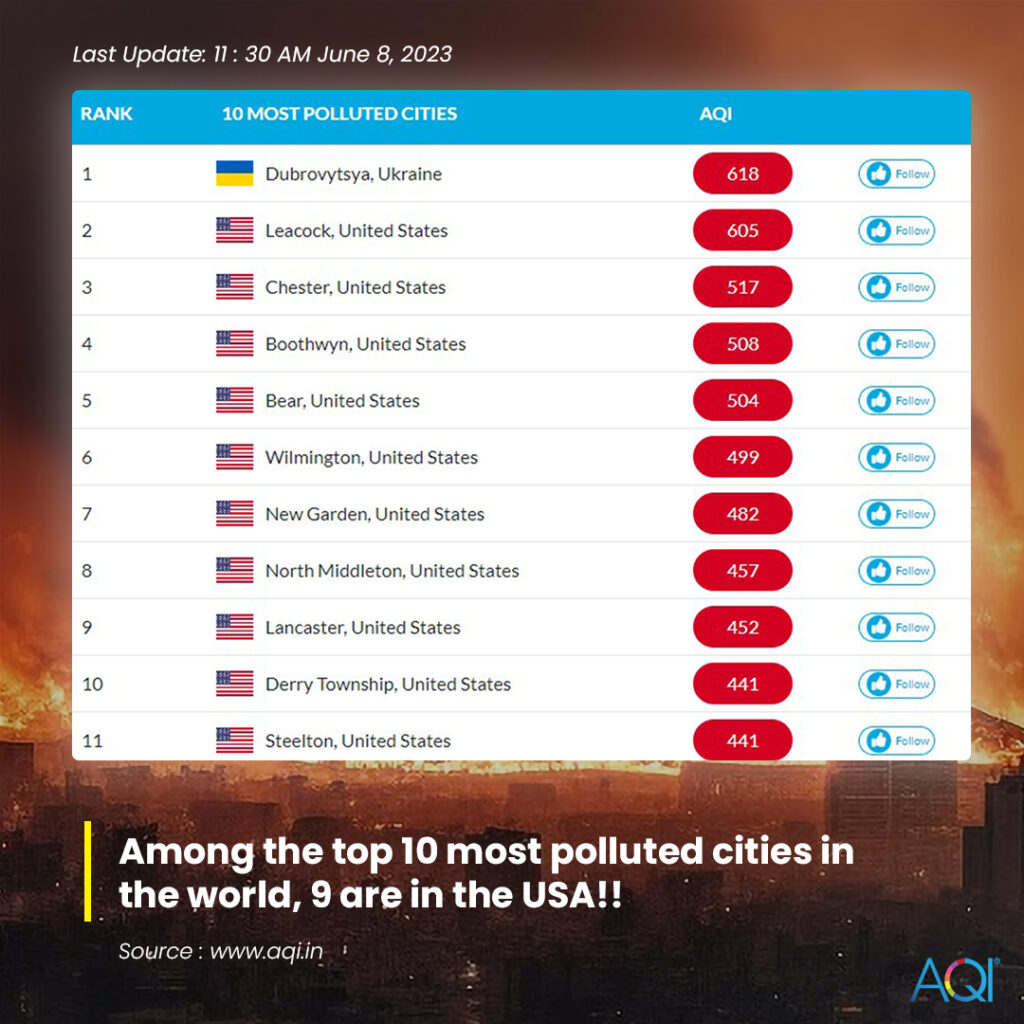
Canadian Wildfires and their current scenario
According to Federal Emergency Preparedness Minister Bill Blair, Canada is experiencing its worst wildfires ever. This information is highlighted in a report by The Canadian Press. The Canadian Interagency Forest Fire Centre has reported a large number of active fires, reaching a total of 415. The country is facing a major fire outbreak. This year, wildfires have destroyed around 37,000 square kilometers of land. The outlook for the future indicates that there will be a continued high level of fire activity in the coming months.
– BRITISH COLUMBIA
In British Columbia, there are currently 78 ongoing wildfires and 24 of them are labeled as out of control. Since the beginning of the year, a total of 382 fires have destroyed a large area spanning over 4,563 square kilometers. The extent of the damage is substantial. Particularly noteworthy is a fire in the northern region of Fort St. John, which is the second-largest fire ever recorded in the province. It has engulfed an estimated area of 2,400 square kilometers.
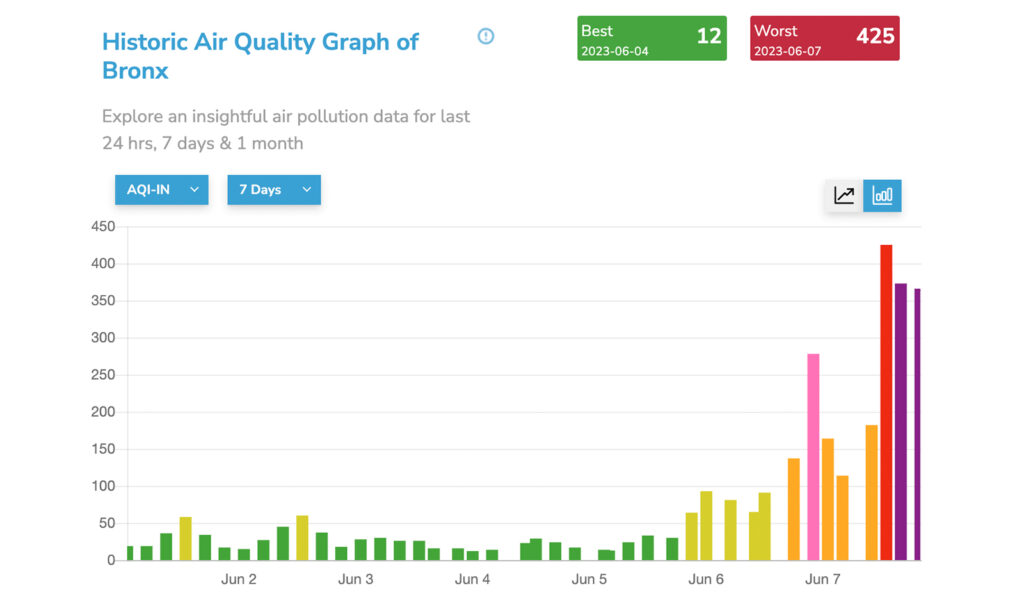
– ALBERTA
Alberta is currently facing 64 wildfires throughout the province, with 18 of them being out of control. Since the beginning of the year, a total of 590 wildfires have burned approximately 12,016 square kilometers of land. The state of emergency, which was declared on May 6, has now been lifted. It helped in coordinating firefighting resources and assistance for evacuees. At the peak of the situation in early May, around 29,000 people were forced to leave their homes in different communities. Currently, about 4,300 residents are still under evacuation orders. Evacuation orders are in effect for Fort Chipewyan, Dene Tha’ First Nation, Fox Lake, Chipewyan Lake, and nearby areas. The wildfires are also affecting a part of Sturgeon Lake Cree Nation. Garden River is presently under an evacuation alert.
– QUEBEC
In Quebec, there are 150 wildfires, and 110 of them are considered uncontrollable. These fires have already burned over 1,730 square kilometers of land. Premier François Legault is concerned about the Abitibi-Témiscamingue region in northwestern Quebec. The communities of Normétal and Lebel-sur-Quévillon are particularly at risk. Approximately 10,000 people have been evacuated from their homes due to the wildfires. Most of the evacuations are taking place in the northwestern Abitibi and eastern Cote-Nord regions.
Impacts of Canadian Wildfires and Response Measures
On Wednesday night, an incredibly high number of around 128 million people in the United States received air quality alerts due to wildfire smoke and ozone. This affected approximately 100 million people in 16 states. As a result, the FAA enforced air traffic restrictions around New York City, causing a temporary suspension of flights at LaGuardia Airport. The severity of air quality problems caused by wildfires is underscored by these alerts, highlighting the urgency for effective action. It is crucial to address the situation promptly and efficiently.
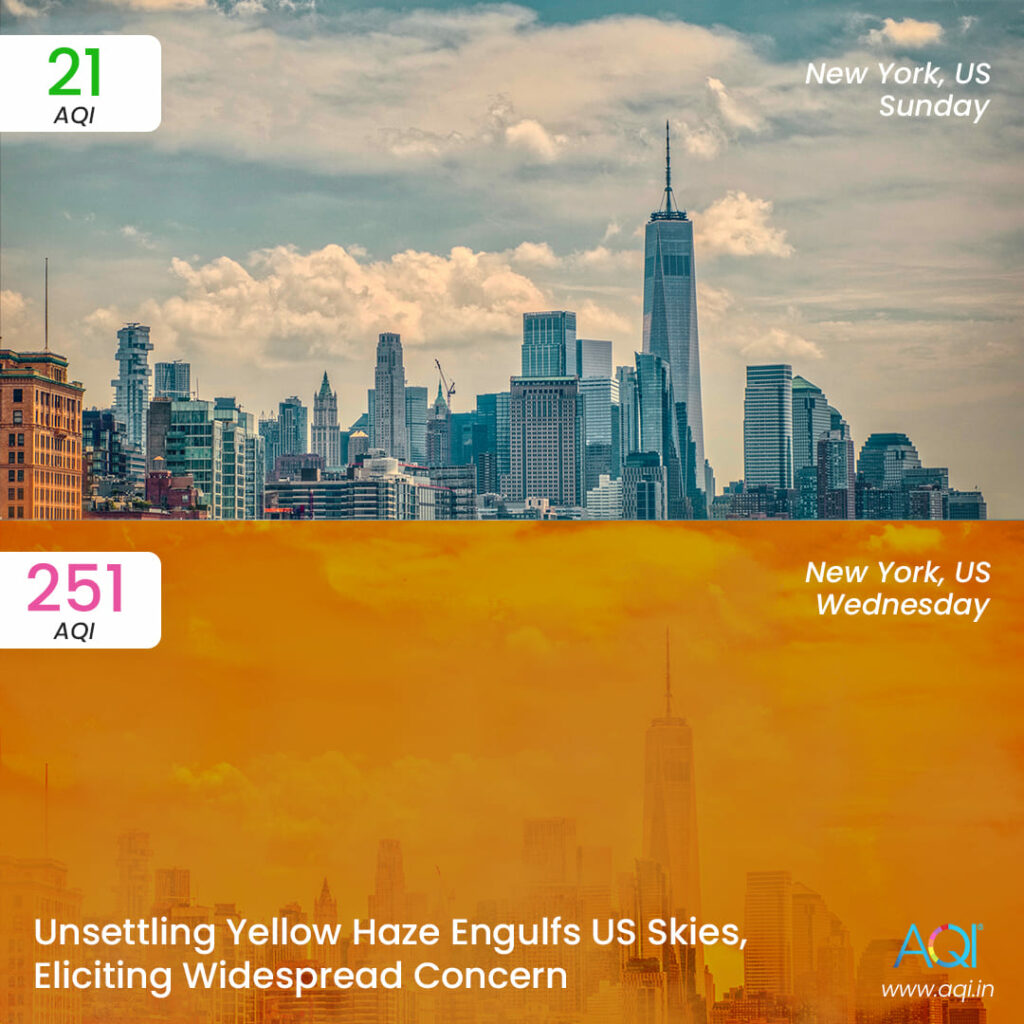
New York City and several other major metro areas experienced a day of orange haze caused by smoke from Canadian wildfires, leading to poor air quality on Thursday as well. The National Weather Service predicted that smoke would continue all day, causing unhealthy air conditions that would affect everyone. The issuance of air quality advisories for all five boroughs of New York City was a response to the situation. With over 8 million residents, the city required measures to address potential air quality concerns.
The Government’s Take on the Issue
Mayor Eric Adams described the situation as something that has never happened before. In response, President Joe Biden extended further firefighting assistance to Canada. This aims to support the ongoing efforts to control wildfires across the nation.
After President Biden spoke with Canadian Prime Minister Justin Trudeau, a directive was issued. The directive instructs the deployment of all available federal firefighting resources to enhance the ongoing firefighting efforts. The United States has sent over 600 firefighters, support staff, and various assets to help fight the wildfires. Their deployment aims to make a meaningful contribution to the ongoing battle against the wildfires. Canada is currently contending with more than 400 fires, as reported by the Canadian Interagency Forest Fire Centre. Out of these, 252 fires are classified as uncontrolled.
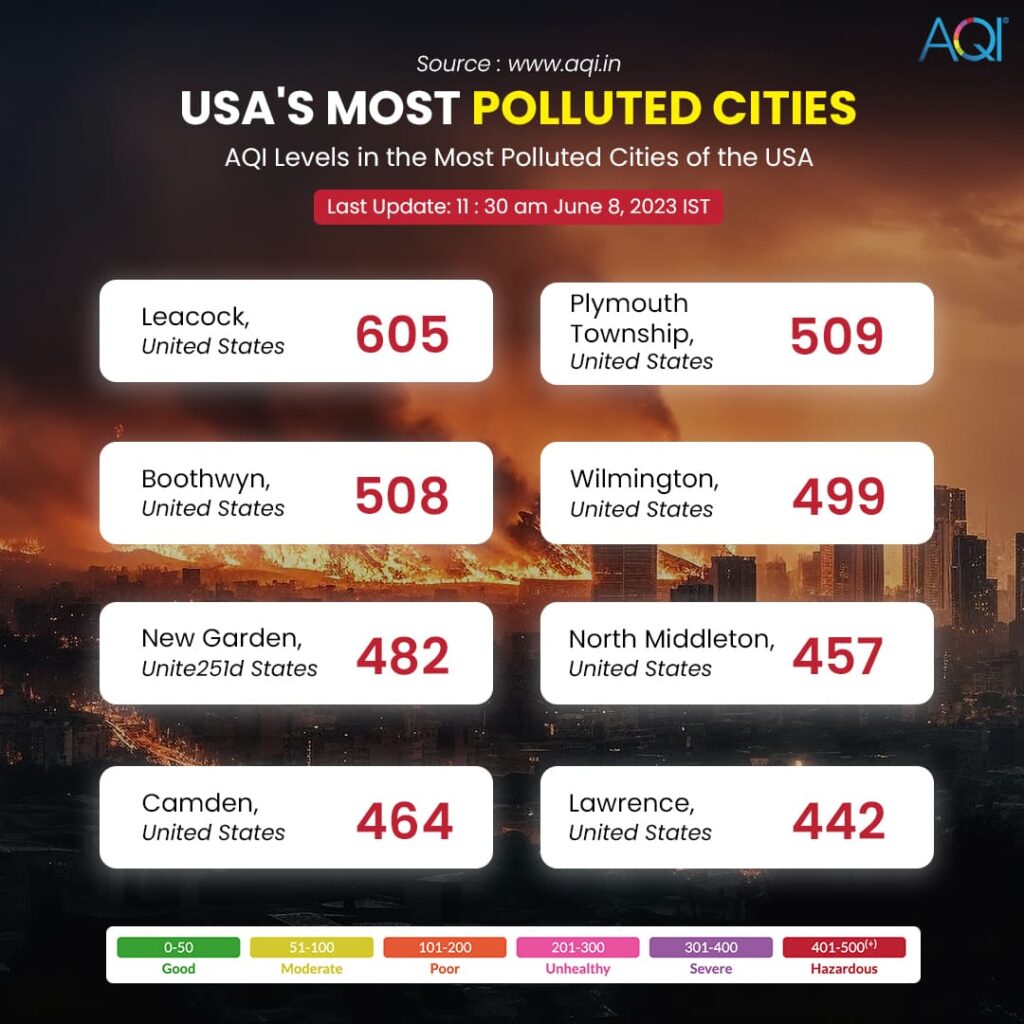
Safeguarding Public Health: Mitigating the Adverse Effects
Safeguarding public health is of paramount importance when it comes to mitigating the adverse effects of Canadian wildfires.
1. Raising Awareness: Educating Communities about Wildfire-Induced AQI Concerns
- Introduce educational programs to increase public understanding of the health risks related to wildfire smoke and the importance of checking the Air Quality Index (AQI) for community members.
- Share accurate and timely information about air quality conditions, health risks, and protective measures through different channels such as websites, social media, and local news outlets.
- Targeted messaging: Tailoring communication efforts to reach vulnerable populations, such as individuals with respiratory conditions, the elderly, children, and pregnant women.
- Build partnerships and promote collaboration with healthcare professionals and organizations to effectively share crucial information and provide guidance on minimizing exposure and addressing health concerns related to wildfire smoke.
2. Monitoring and Early Warning Systems: Enhancing Preparedness
- Improve and strengthen the existing air quality monitoring networks to ensure the availability of up-to-date information on pollutant levels, with a particular emphasis on monitoring and reporting data related to wildfire smoke.
- Utilize satellite imagery and remote sensing technologies to improve the detection and monitoring of wildfires, as well as the tracking and spread of smoke.
- Create and put into action reliable early warning systems that use data from monitoring networks to notify communities about worsening air quality conditions and possible health risks.
- Work together with meteorological agencies to make use of weather forecasts and predictive modeling. This will help anticipate the path of wildfire smoke and issue timely warnings to the public.
3. Protective Measures: Minimizing Health Risks
- Encourage the use of indoor high-efficiency particulate air (HEPA) filters and air purifiers to reduce exposure to smoke particles.
- Encourage people to seal their homes by closing doors and windows, using weatherstripping, and ensuring proper ventilation systems to prevent smoke from entering.
- N95 respirators: Recommending the use of N95 respirators or masks that provide a high level of filtration when outdoor exposure is unavoidable, especially for individuals with respiratory conditions.
- Evacuation planning: Develop evacuation plans and strategies in high-risk areas to ensure the safety and well-being of residents when air quality reaches hazardous levels.
- Improve the readiness of the healthcare system to manage the heightened demand during wildfire events. This includes ensuring access to necessary medical resources, medications, and respiratory equipment.
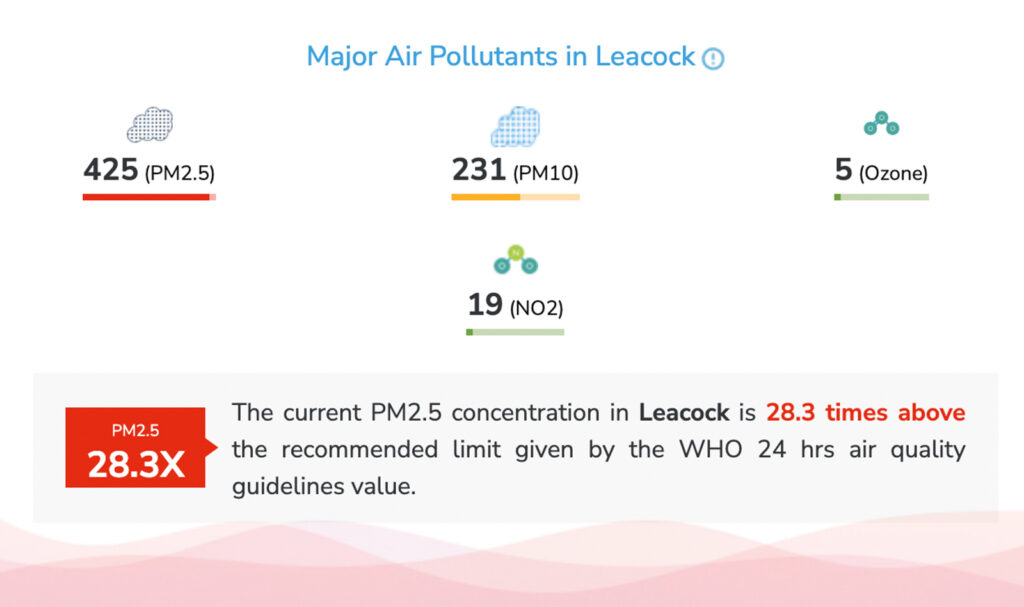
Implementing these measures safeguards public health, mitigates wildfire impacts, and fosters community resilience. Taking proactive steps ensures well-being and reduces risks. Increasing awareness, improving monitoring systems, and implementing protective measures all work together to create a comprehensive approach. This approach aims to minimize health risks and foster resilience in the face of environmental challenges.
Steps for a Healthier Environment
To prioritize personal health during wildfire events, it is crucial to minimize exposure to wildfire smoke. Here are some tips to help reduce exposure:
- Stay Updated and Informed: Stay vigilant by monitoring local air quality reports and diligently following official guidelines and advisories pertaining to wildfire smoke. Stay informed about real-time air quality in your surroundings by installing the AQI app available for both Android and iOS devices.
- Indoor Protection: During periods of poor air quality caused by wildfire smoke, it is recommended to prioritize staying indoors. Keep windows and doors closed to prevent smoke infiltration. Enhance indoor air quality by using air purifiers or fresh air machines equipped with a HEPA air filter, offering respite from smoky environments.
- Limit physical exertion: Engaging in strenuous activities can increase your breathing rate and inhalation of harmful pollutants present in the air, especially outdoors.
- Use proper masks: If you need to be outdoors during periods of high smoke concentration, wearing a mask specifically designed to filter out small particles can offer some protection. Use N-95 masks as they effectively filter out particle pollution. If you have to travel by car, use car cabin filters to filter out harmful smoke particles.